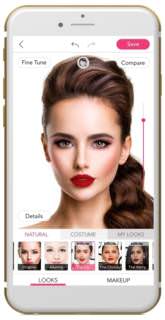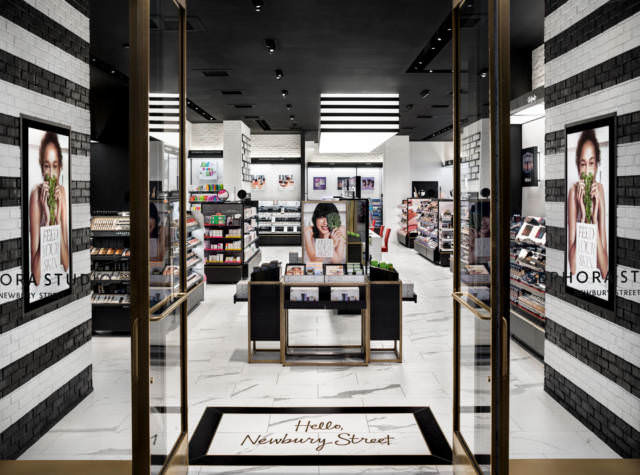Jerri DeVard has joined Office Depot as their new chief marketing officer and executive vice president. Most recently, she held the position of senior vice president and CMO of security provider ADT.
“We are excited to welcome Jerri to Office Depot, as her leadership and fresh perspective will be instrumental in driving a more integrated omnichannel marketing approach that builds brand loyalty and positions the company for growth,” said Gerry Smith, Office Depot’s CEO.
Verizon’s chief marketing officer Diego Scotti has followed up on a letter to agency partners on the lack of diversity in the advertising field, starting up a diversity fellowship program of its own. The program, called Ad Fellows, will allow 20 college graduates of diverse backgrounds to rotate through a variety of positions at Verizon and its agency partners.
“As one of the country’s top five advertisers, Verizon sees it as our responsibility to lead the conversation on diversity and take action to promote broader industry change,” Scotti told Business Insider. “We want our company, as well as our agency partners, to reflect our customers, and to make that happen we need a pipeline of diverse talent.”
NBCUniversal has created a new division devoted to unifying the network’s research efforts across all their platforms and partnerships, transferring Kavita Vazirani to lead the team as executive vice president of strategic insights and analytics.
“NBCUniversal continues to push the envelope in advanced advertising, content development and distribution strategies to best serve our viewers and our advertising partners’ ultimate sales objectives,” said NBCUniversal’s executive vice president of business operations Krishan Bhatia. “Now more than ever, we need someone who can unify the innovative consumer and marketing insights and analytics taking place at our company.”
Vazirani has been at NBCUniversal for 20 years, most recently holding the position of senior vice president of media strategy and sciences. Prior to her term at NBC, she held a variety of senior roles at Comcast.
Allstate chief marketing officer Sanjay Gupta, who has helmed the post for the past five years, is no longer in that role, according to a report by AdWeek. The former Ally executive recently sold $1.44 million in Allstate shares. The publicly held insurance company has not officially announced the move yet.
TiVo is undergoing executive changes this week, losing chief marketing officer Ira Bahr and gaining Ted Malone, who is signing on as vice president of consumer products and services.
Before joining the TiVo team, Malone was head of Ericsson’s IPTC portfolio, and prior to that worked at Microsoft as principal product planning lead for their IPTV platforms. Bahr has joined medical technology firm AliveCor as their chief commercial officer.
Netflix has brought on Melissa Cobb as vice president for kids and family, who will oversee creation and acquisition of family-friendly content.
“Given the creative freedom offered here and the global audience, there’s a huge opportunity for talented creatives across the industry to create the world’s best kids and family series and features for Netflix,” said Cobb. “My goal for this team is to offer a diverse slate of great, powerful and timeless family entertainment with global appeal.”
Before signing on with Netflix, Cobb was chief creative officer and studio head for Oriental DreamWorks, where she led all collaborations between the China office and its domestic counterpart.
Pete Hawley has joined Telltale Games as CEO, replacing Dan Connors, who will assume an advisory position once Hawley begins work on September 18.
“Pete Hawley is widely regarded as a forward-looking executive with a strong grasp of where the interactive entertainment business is heading,” said Jon Feltheimer, Lionsgate CEO and board member of Telltale. “We at Lionsgate look forward to working closely with Pete, John and the rest of the Telltale team.”
Previously, Hawley worked at Zynga as senior vice president and general manager.
Yellow Pages has appointed David Eckert to the position of president and CEO.
“David has a keen understanding of our industry and a proven track record of improving business performance,” said Robert MacLellan, chairman of the board of directors at Yellow Pages. “As a CEO, David has demonstrated his ability to devise and execute on strategic plans to deliver results. David is the right person to lead Yellow Pages as we focus on stabilizing and growing the business over the long-term.”
Eckert has also served as CEO for Hibu Group, among numerous other international companies.
SeaWorld has elected Yoshikazu Maruyama as their latest chairman of the board, replacing David D’Alessandro, who will be stepping down from the board entirely. Furthermore, the board has appointed Donald C. Robinson as lead independent director.
“Our Board is committed to continuing to advance its governance standards and independence, and we believe that by establishing these two complementary roles with clear responsibilities, we can enhance the rigorous and independent oversight of the company and the Board,” said Robinson.
Maruyama, in addition to his role on SeaWorld’s board of directors, is president of Zhonghong Group America, a major shareholder in the theme park. Prior to his promotion, Robinson had worked at SeaWorld as a director since 2016, and before that was executive vice president of Hong Kong Disneyland.
Twitter has poached Kay Madati from BET, appointing him as their latest head of content partnerships. He replaces Ross Hoffman, who quit the company in May.
Before signing on at BET in 2014, Madati worked at Facebook as head of entertainment and media global marketing solutions, and before that was vice president of audience experience at CNN Worldwide.
Comedy Central has promoted Shawn Silverman to the position of senior vice president of brand marketing, where he will oversee all off-channel advertising, as well as promotional events and experiential marketing.
Before entering his elevated role, Silverman was vice president of brand marketing and events, working on campaigns for The Daily Show, South Park and Key & Peele, among many others.
National Geographic is expanding its digital media executive staff, bringing on David Miller and Kyle Christensen as general manager of the brand’s website and vice president of social and digital strategy, respectively.
Miller previously served as vice president of product management at AOL. Christensen joins National Geographic from Netflix, where he was marketing and social manager for the company’s original films and series. While at the streaming service, Christensen won a Cannes Lion and Facebook’s grand prize for best TV social campaign for his campaigns promoting Narcos.
Jennifer Garner and John Foraker have signed on as co-founders of Once Upon a Farm, another company joining in on the fast-growing organic baby food market. The two will hold the positions of chief brand officer and CEO, respectively.
Before joining the new brand, Foraker led organic-food company Annie’s as president for 18 years, departing after negotiating its $820 million sale to General Mills. Garner has been an ambassador for Save the Children for the past five years, and has appeared in numerous critically and financially successful films over her 21-year career.
Flaregames has recruited Marja Konttinen as their latest head of brand management, where she will work with the mobile games publisher on promoting their Zombie Gunship and Nonstop franchises.
“Flaregames has built such a diverse portfolio in a short amount of time, and that’s testament to both the in-house collective skillset and the world-class developers behind the games,” said Konttinen. “I was initially drawn to the marketing team’s philosophy of backing up creative decisions by research and numbers, and I’m excited to further build on this mindset.”
Previously, Konttinen worked at Rovio, holding the title of marketing director, overseeing the launches of Angry Birds Space and partnerships with NASA, Samsung and 20th Century Fox.
Tom Schmitt has joined advertising software provider VideoAmp as chief financial officer, which recently raised $21 million in funding. Alongside this announcement, Krista Thomas has joined the company as well, holding the title of global head of marketing.
“VideoAmp is aggressively pursuing our go-to-market strategy around becoming the key operating system technology that unites the linear TV and digital video markets,” said VideoAmp’s chief strategy officer, Jay Prasad. “A key part of our approach is to clearly communicate to clients, partners and the market the value that is realized using these product.”
Schmitt most recently was CFO and COO for Freewheel TV, while Thomas joins VideoAmp from her previous role of vice president of product marketing for Rubicon Project.
iThrive Games has promoted Heidi McDonald to the position of senior creative director, where she will lead the nonprofit’s partnerships with game developers to create prosocial projects.
McDonald has been with the company since 2015, where she spearheaded iThrive’s design guide and game jam programs. Prior to joining the organization, McDonald worked as a designer and writer for Schell Games.
The Branded Content Marketing Association has expanded, opening a new chapter in Canada. Heading the new division as president will be Kaaren Whitney-Vernon, with Walmart, Shaftesbury, SGS International and KPMG as founding members.
“Canadian brands and marketers have really embraced the impact and potential of branded entertainment,” said Whitney-Vernon. “Our mission is to create an engaged and active community for branded content professionals throughout Canada and to work towards building a standardized tool for measurement.”
Whitney-Vernon led branded entertainment agency shift2 for the past three years, and before that was president and CEO of Youth Culture Group.
Txampi Diz has departed KCD Worldwide after 15 years at the PR firm, joining Balmain as its first-ever chief marketing officer, though he will remain an advisor for his former employer’s executive board of directors.
Boutique investment advisors ValueSetters has recruited Coreen Kraysler as their latest chief financial officer. In the role, Kraysler will work to further the firm’s partnership with Netcapital. A chartered financial analyst, Kraysler has most recently held the position of senior vice president and principal at Independence Investments, where she served on their investment committee.
ValueSetters has shaken up its full executive team this year, having hired a new CEO and CTO earlier in the summer.
Starwood Retail Partners has brought on Michael P. Glimcher as CEO, succeeding Scott Wolstein, who will assume an advisory role for Starwood Capital Group.
Before joining Starwood, Glimcher was CEO and chairman of Glimcher Realty Trust from 2007 to 2015 and at WP Glimcher until 2016. He is also an executive board member of the National Association of Real Estate Investment Trusts.
PDL BioPharma has appointed a new president in Dominique P. Monnet, who will oversee the company’s efforts to acquire other businesses in the industry.
“Dominique’s proven track record of achieving significant commercial success with other biopharmaceutical companies will benefit the current products that Noden has on the market in addition to growing the business through acquisitions,”said PDL BioPharma CEO John P. McLaughlin.
Previously, Monnet served as senior vice president and chief marketing officer of Alexion Pharmaceuticals, and she has held senior-level positions in the biotechnology field for over 30 years.
Marketing and customer experience optimizer Optimizely has hired Carl Tsukahara as CMO, where he hopes to expand the company’s platform to make experimentation simpler. Tsukahara also reports plans to recruit new executives for Optimizely’s 400-person team.
“Corporations across the world are trying to figure out how to get better at working with new customers and prospect behavior,” said Tsukahara. “I really think the time is now to take data science and apply it to these hard problems.”
Tsukahara has held CMO positions at five different companies—Birst, Monitise, Clairmail, Dun & Bradstreet and Aim Technology—and has held senior-level marketing positions in the Bay Area for almost 25 years.
(Editor’s Note: This post will be updated daily until Friday, September 15. Have a new hire tip? Let us know at editorial@alistdaily.com.)
Job Vacancies
Make sure to check back for updates on our Jobs Page.



